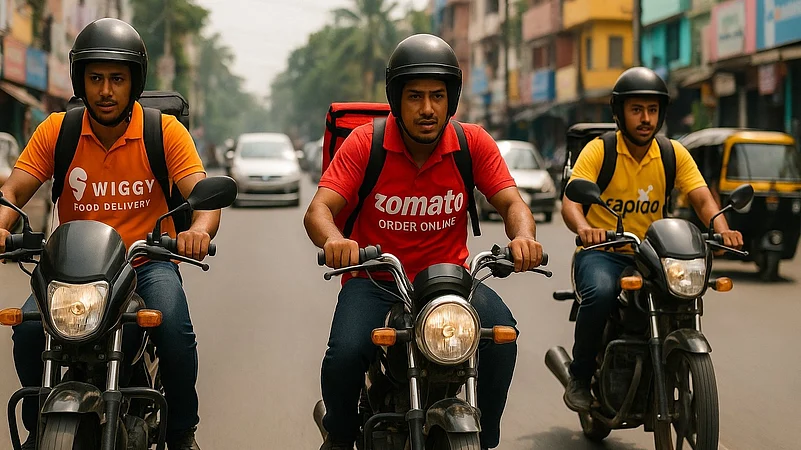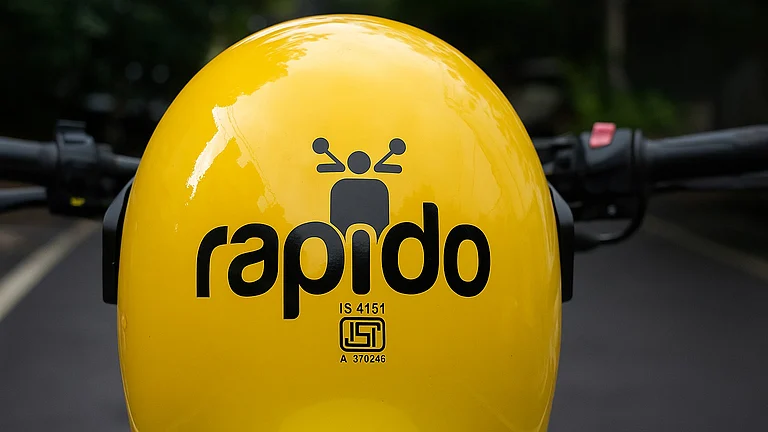Ride-hailing platform Rapido has created buzz across the food delivery market since its latest move with “Ownly”. The start-up, which is gearing up to enter the food delivery space with pilot project in Bengaluru, aims to shake up the duopoly long held by Swiggy and Zomato. However, analysts have a different viewpoint here.
While pointing out at operational complexity of the food delivery business and deep-rooted market dynamics that favour incumbents, the brokerage firms opined that Rapido’s entry into food delivery space is unlikely to disrupt the Zomato-Swiggy duopoly.
Global brokerage firm Bernstein shed light on similar previous attempts by Amazon, Ola, and the government-backed ONDC. “Most of these haven’t been able to scale up due to lack of selection, poor customer experience and complexity of operations. Operationally complex business, incumbents at an advantage,” it said.
And this complexity runs deep because online food aggregators have to negotiate take rates with 200-300K restaurants. India is a fragmented market with 10% of GOV from QSRs and the rest from smaller restaurants. “At low contribution margins, this flywheel doesn’t work,” it added.
Another analyst, HSBC, also echoed similar concerns about the food delivery market. While the economics of two-wheeler ride-sharing are comparable to food delivery, the platform will face significant hurdles like maintaining customer experience, execution, and achieving scale. “The new entrants may acquire industry tail, which is not very profitable,” it said.
Market Share, Profitability & Supply
Bernstein believes that there will be “minimal market share” impact on food delivery giants Swiggy and Zomato from Rapido’s entry. The current food delivery market is a duopoly with both platforms having a strong customer base, with Zomato having 54% share and Swiggy 46%.
Swiggy food delivery GMV also grew at 18% YoY growth in Q4FY25 compared to Zomato GMV at 16% YOY. GOV growth for Swiggy has been trending higher on a YoY basis since the last two quarters. The brokerage firm’s management witnessed good traction in the 10-min delivery offering (Bolt), available in 500 cities.
“We do not anticipate material market share impact from Rapido’s entry. Expand the market at the lower tier. Rapido could expand the restaurant pool by attracting lower AOV restaurant outlets in tier 2 markets. These restaurants have not been economical for Zomato and Swiggy,” the analyst said.
To note, Rapido’s food delivery initiative “Ownly” is targeting value-conscious consumers by focusing on meals priced under ₹150 and offering a zero-commission model to restaurant partners. With an aim to serve the broader “Bharat” market, the platform promises prices on par with offline outlets, along with no extra packaging charges or platform fees
“The average delivery cost per order is ₹50-60 and makes an 8-15% take rate at ₹400-500 generate very low profitability without the ability to invest back in the business and expand into tier 2 cities where the penetration is lower and growth opportunity is higher,” it added.
Apart from market share, Bernstein stated that profitability target also holds. It asserted that the ability to operate at low take rates will be difficult for Rapido, and eventually, it will have to increase take rates to sustain.
“Rapido is still an unprofitable business. It has raised $600 million from investors. Swiggy is an investor and owns a 12-13% stake in the company. We will remain positive on the 5% adjusted EBITDA target for food delivery margins in the medium term,” it added.
And on supply side, Zomato holds a stronger position than other market players. As of Q4 FY25, the Deepinder Goyal-led platform has an average of approximately 314,000 monthly restaurants partners, compared to Swiggy’s 252,000.
“This gives Zomato a clear advantage in terms of scale and reach. For a new entrant like Rapido, negotiating with the over 500,000 restaurants currently associated with these two incumbents presents a significant challenge,” it added.
Gaps in Duopoly
Despite the hurdles, Rapido still has room to carve out opportunities in the food delivery space. It can grow the overall restaurant network, which is currently estimated between 300,000 to 400,000, with the potential to reach one million. Bernstein stated that it can do so by onboarding smaller, lower average order value (AOV) restaurants, particularly in tier 2 and beyond markets.
“These outlets have so far remained outside the operational scope of Zomato and Swiggy, largely due to poor unit economics,” it said.
HSBC also believes that the appeal of entering the food delivery space is clear for ride-sharing companies like Rapido. The cost structures for two-wheeler ride-sharing and food delivery are fairly similar, but the latter offers significantly higher margins and a larger market opportunity.
While the average order value (AOV) for a 2W ride is around ₹70 with a modest contribution margin of ₹3–4, food delivery platforms like Zomato earn over ₹100 in revenue per order—despite having comparable delivery costs. This margin differential makes food delivery a more lucrative proposition.
However, the real challenge lies beyond the economics: maintaining a consistent customer experience, executing efficiently at scale, and navigating operational complexity will be crucial for any ride-hailing player attempting to break into this competitive space. In short, it’s a déjà vu moment for the FD industry.




















